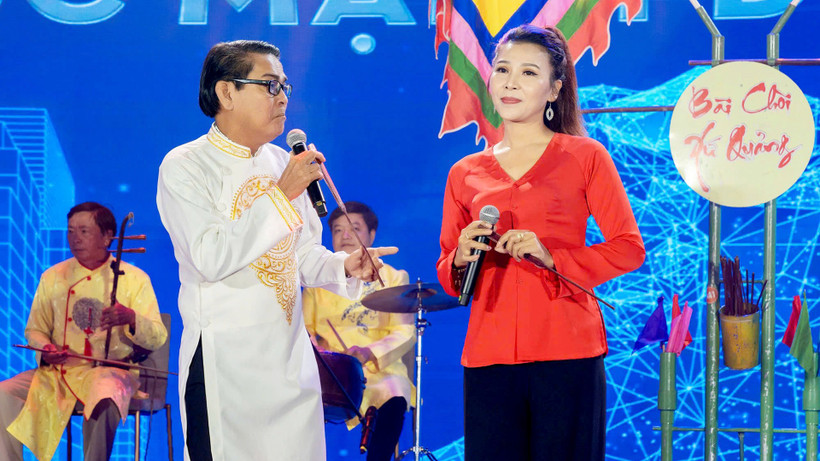
Artist Huyen Tan (right) and Meritorious Artist Ho Thanh Chau are passionate about the art of Bai Choi. (Photo by PHU TAN)
Representative Intangible Cultural Heritage of Humanity
On December 7, 2017, the art heritage of Bài Chòi in Central Vietnam was recognized by UNESCO as an intangible cultural heritage of humanity. The popularity, ease of listening and understanding of Bài Chòi is expressed through four main melodies: Xàng Xê, Xuân Nữ, Cổ Bản and Ho Quảng.
Currently, Da Nang city has six Meritorious Artists in the art of Bai Choi including: Ho Thanh Chau, Pham Hong Thai, Le Van Dan, Do Huu Que, Vo Thi Ninh and Van Phuoc Pho. They are six distinct colors participating in the journey of preserving the art of Bai Choi.
In daily life, each artist has a different personality. However, when the stage lights are on, the passion of the profession urges them to strive for spiritual values full of humanity and charity.
Meritorious artist Pham Hong Thai (56 years old), residing in Duong Lam 2 village, Hoa Phong commune, Hoa Vang district (Da Nang), said that he has been performing Bai Choi for 40 years. Recalling his youth, Mr. Thai always cherishes the opportunity to join the Hoa Phong commune mobile information group. The opportunity to interact with opera artists has created a stepping stone for him to pursue the career of performing Bai Choi until now.
“My main role in the troupe is as a musician. However, because I am so passionate about the art of Bài Chòi, in addition to performing time, I also study and research it in depth. In fact, the art of Bài Chòi does not place much emphasis on books or science . Thanks to its rustic character, almost all ages enjoy Bài Chòi. Over the years, every time our Song Yen Bài Chòi Club performs, people from the villages have enthusiastically supported it,” said Mr. Thai.
Strangely enough, all folk songs and proverbs can easily become lyrics in Bài Chòi. When performing, the singer skillfully applies four melodies to create novelty and attract the audience. Thanks to that, another important task that Bài Chòi clubs often do is to propagate the Party's policies and guidelines, and the State's policies and laws to the people.
Propaganda-oriented bai choi scripts are usually short, under five minutes. With humorous performances, people can easily absorb and understand the information correctly. On the other hand, the straightforward and frank personality of the people of the central region becomes a strong point when propagating information using bai choi.
Mr. Thai still remembers clearly that in the 90s of the last century, people in the villages always looked forward to the Bai Choi troupe returning to their locality. At that time, people mainly did heavy farming work.
Their relaxing moment was watching the Bai Choi performance with hearty laughter. Looking down from the stage, Mr. Thai could easily see that the communal stadium was packed with people. That was the happiest moment for the troupe.
Regarding the story of building the next generation of Bai Choi art, Meritorious Artist Pham Hong Thai emphasized that the best age to nurture and practice Bai Choi is from 6 to 10 years old. The reason why it is necessary to train children early is because at this age, the ability to absorb and feel music in general and Bai Choi in particular will be the easiest.
As long as each school has a few students who love and know how to sing at a basic level, the Bài Chòi will survive forever. In fact, all primary and secondary schools in Hòa Văng district now have the “We sing folk songs” club to serve as a foundation for Bài Chòi training. Meritorious Artist Phạm Hồng Thái is the teacher who directly guides and practices for the students.
|
Central Vietnam's Bài Chòi is recognized by UNESCO as an Intangible Cultural Heritage of Humanity. (Photo: PHU TAN) |
The charming features of Quang Nam
“When I was young, traditional music in general and classical opera and reformed opera in particular had a special attraction for me. It was during my junior high school years that I learned about folk music through the song “Come here with the street of love” by Meritorious Artist Do Linh,” artist Huyen Tan (real name Nguyen Thi Phu Tan, 40 years old), Director of the Song Han Bai Choi Club, recalls the milestone of her introduction to folk music.
Since ancient times, Vietnamese folk songs have said, “Everyone plays the monochord, listen to it/ As a girl, don’t listen to the monochord.” However, artist Huyen Tan always has feelings for this interesting musical instrument. The monochord is one of the instruments used to perform Bài Chòi. Every time she hears the monochord, Huyen Tan feels like she receives a strong energy, enough to perform hundreds of songs on stage.
Ms. Huyen Tan's journey to learn and acquire each piece of knowledge and skill in performing Bài Chòi was not easy. In 2018, when she had a stable office job, Ms. Huyen Tan decided to quit her job to switch to the field of Bài Chòi singing. Ms. Huyen Tan set a goal to stick with Bài Chòi art for a long time, but this is a genre that few people pursue, so the number of Bài Chòi teachers in the central region can be counted on the fingers of one hand.
Meritorious Artist Do Linh is the person who directly guides and trains Ms. Huyen Tan in the period of building a foundation of knowledge about the art of Bai Choi. Accordingly, a Bai Choi performance always has many criteria such as the quality of the singing voice, the suitability of the lyrics in each space, situation and audience.
“From the sound of the instrument to the lyrics in Bài Chòi, everything contains a deep sense of kindness. Every time we go on stage, our emotions often change according to the singing and the mood of the audience. In the set of 30 Bài Chòi cards, each card evokes in the singer a sense of pride and strong belief in the beauty of Vietnamese culture and people. For me, listening to a few Bài Chòi songs or folk music every day is the happiest thing,” said artist Huyền Tân.
Perspectives and ideas in life are skillfully and flexibly incorporated into the content of the song, helping listeners relax while also carrying positive messages to the community.
Over the years, each leader (the central character of the card game, directly calling and singing with a strong personal mark) and female leader in the Song Han Card Game Club have gradually become familiar to the people of Da Nang city. The good news is that this club has found some potential factors.
As a native of Quang Nam province, Mr. Phan Ngoc Sa has a voice that is completely suitable for performing Bai Choi. From the position of flag bearer, supporting singer and then main singer, Mr. Sa easily absorbed the performance skills and handled the stage.
When Mr. Phan Ngoc Sa requested to separate from the Song Han Card Club to return to his hometown and establish a new card team in Tinh Thuy village, Tam Thanh commune, Tam Ky city (Quang Nam), Ms. Huyen Tan believed that the effort to promote the value of the art heritage of card playing had a "green sprout".
“We preserve the beauty of the art of Bài Chòi, which is to contribute a small effort to preserve and develop a national culture. Our generation is always ready to pass on our experience, energy and passion for the profession to the next generation. At present, if we do not “light the fire” for Bài Chòi, then in the future, it will only be a thing of the past,” shared artist Huyen Tan.
Bài chòi requires a high level of interaction between the audience and the conductors and musicians. If the person who calls out Bài chòi is more vocal (singing clearly, with clear accents and vibrato), the musician needs to be sensitive, familiar with the ear (to follow the rhythm) and familiar with the hand (handling the instrument). Therefore, in the coming time, it is necessary to focus on promoting the training of a generation of young people to become musicians specializing in traditional musical instruments and calling out Bài chòi skillfully and energetically.
Source: https://nhandan.vn/gin-giu-va-phat-huy-gia-tri-di-san-van-hoa-phi-vat-the-post858669.html


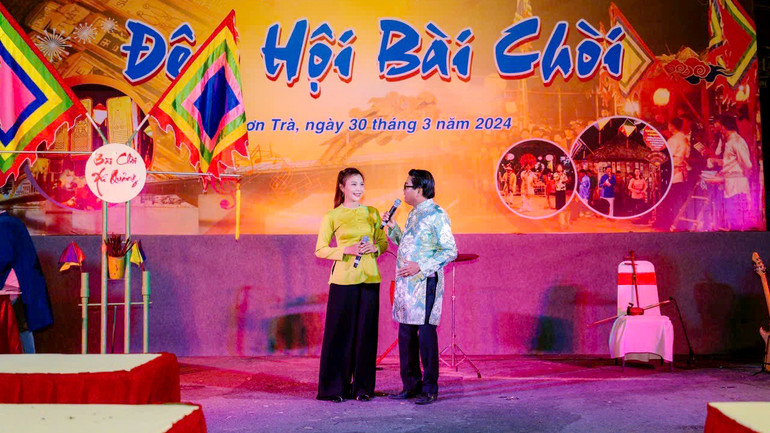


![[Photo] Closing ceremony of the 18th Congress of Hanoi Party Committee](https://vphoto.vietnam.vn/thumb/1200x675/vietnam/resource/IMAGE/2025/10/17/1760704850107_ndo_br_1-jpg.webp)

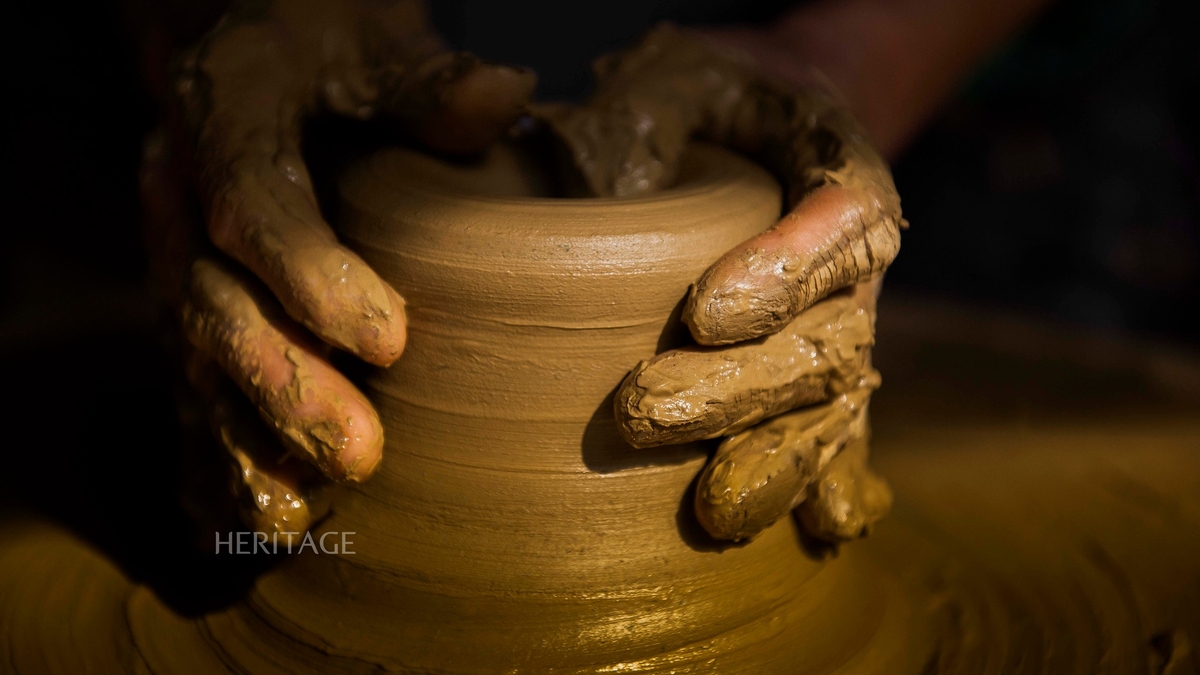




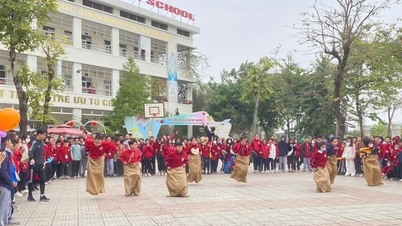



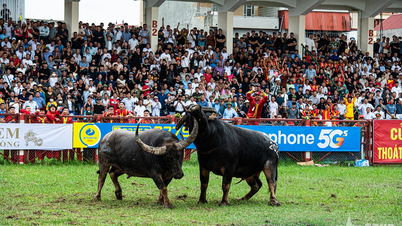

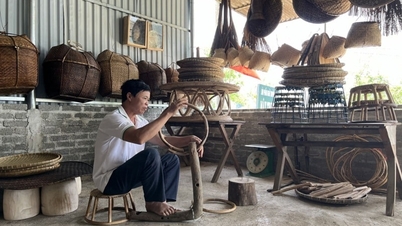

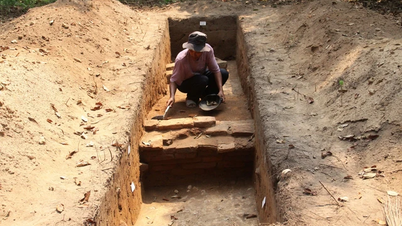



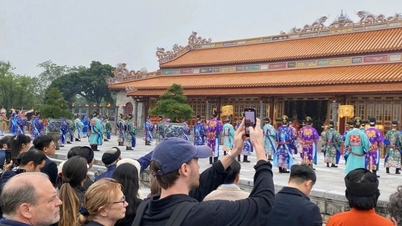



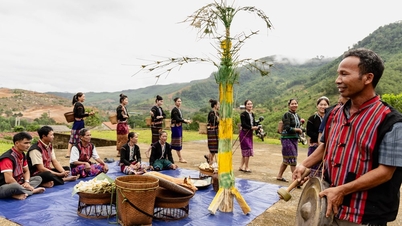






![[Video] Bureaucratic officials who are distant from the people can be dismissed](https://vphoto.vietnam.vn/thumb/402x226/vietnam/resource/IMAGE/2025/10/18/1760772667523_720-jpg.webp)
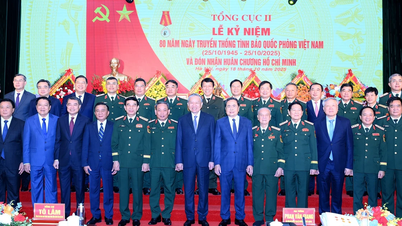
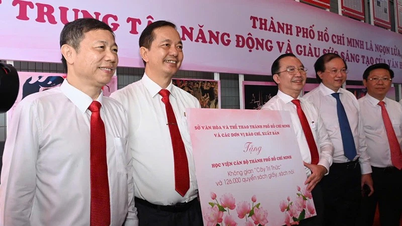
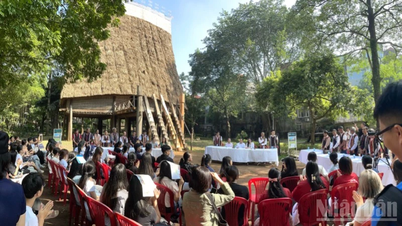
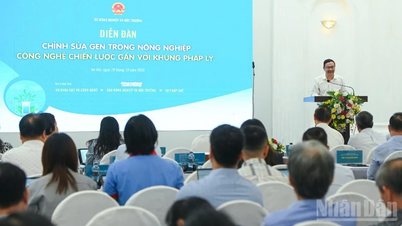

![[Photo] Nhan Dan Newspaper launches “Fatherland in the Heart: The Concert Film”](https://vphoto.vietnam.vn/thumb/1200x675/vietnam/resource/IMAGE/2025/10/16/1760622132545_thiet-ke-chua-co-ten-36-png.webp)


















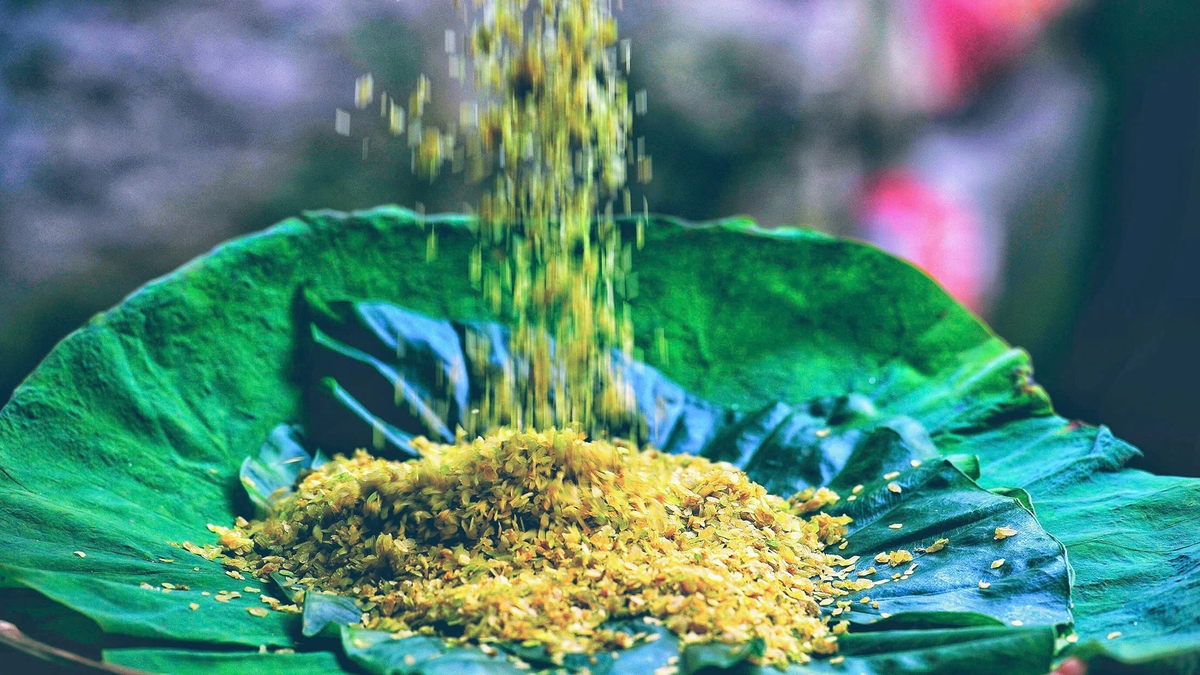

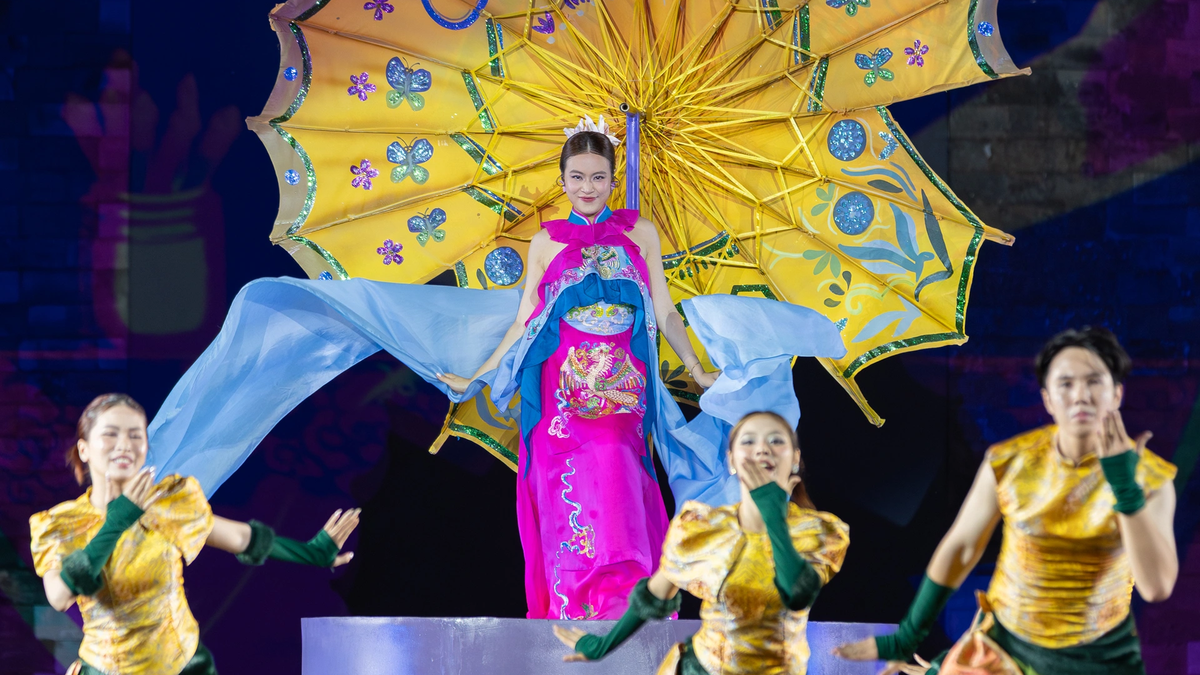



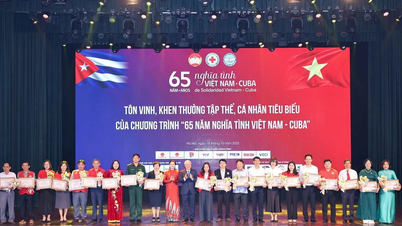



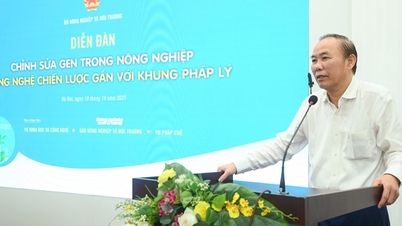





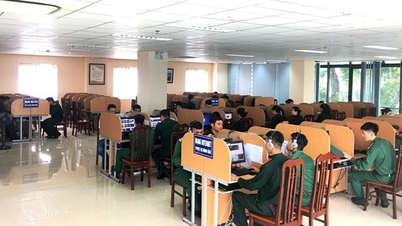




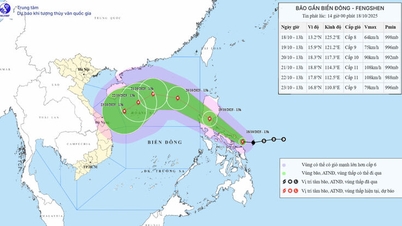










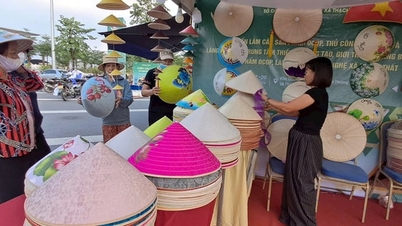

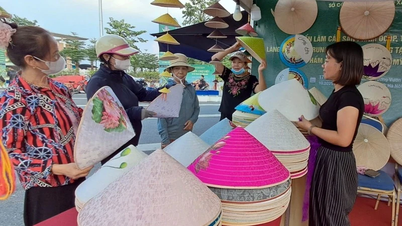
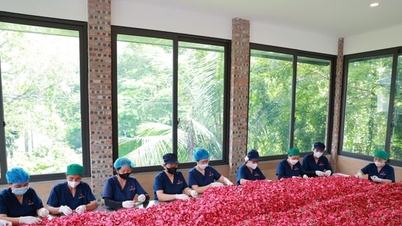

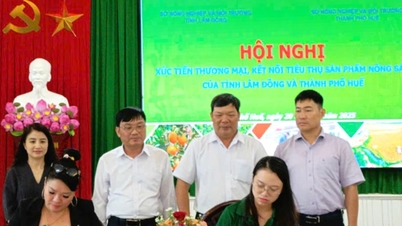




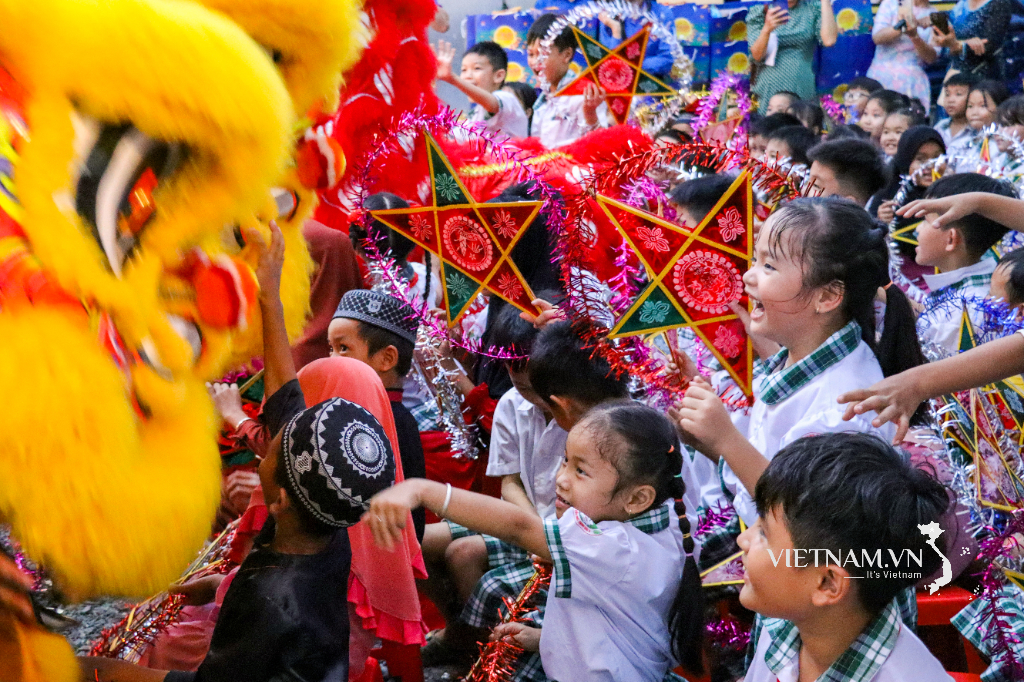

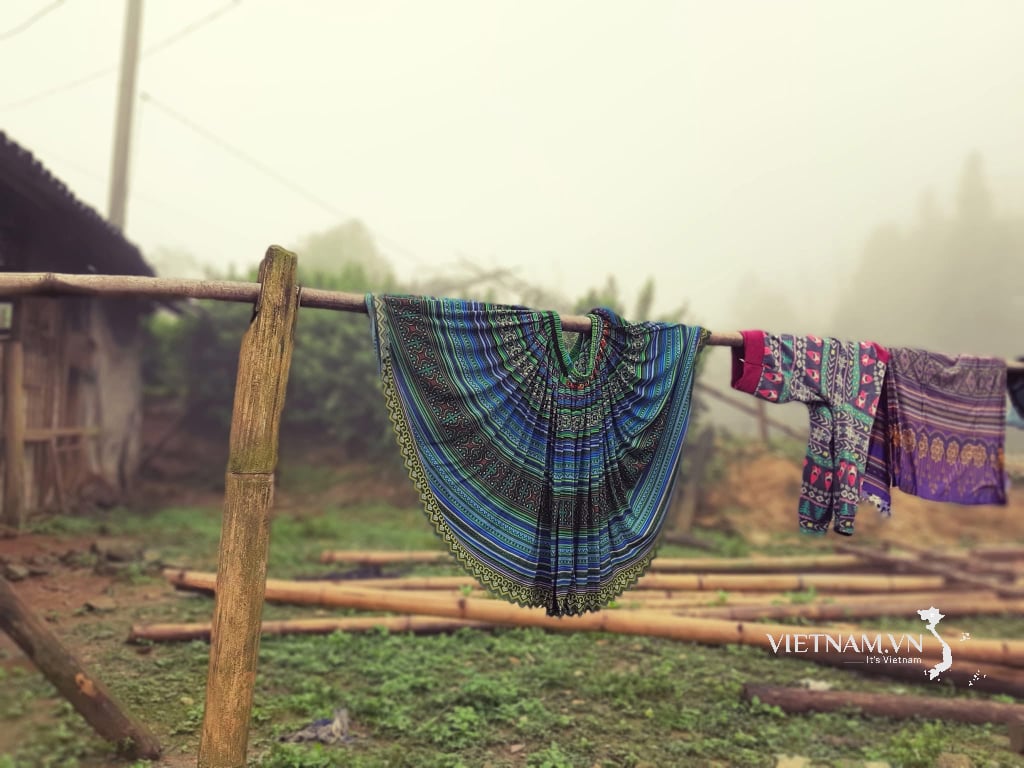

Comment (0)